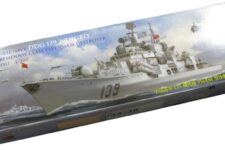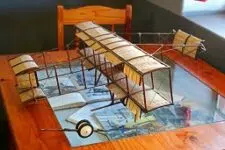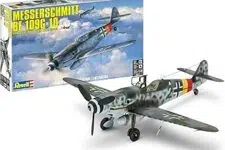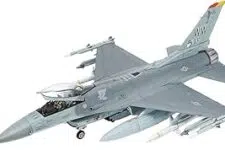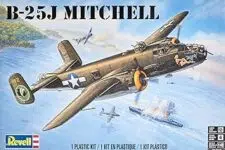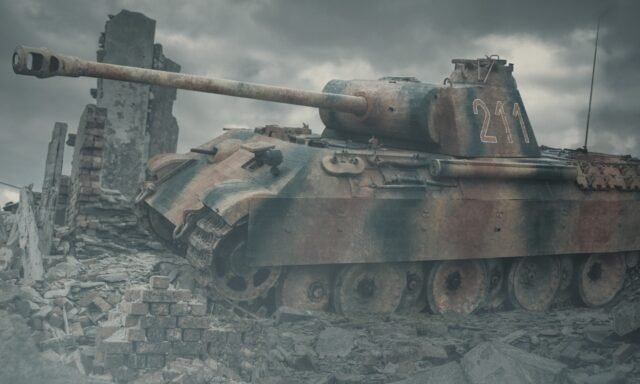
Table of Contents
The Panther Tank, a powerful armored vehicle, played a significant role in World War II by countering the threat of the Soviet T-34 tank. It became one of Germany’s most successful tanks due to its superior firepower and protection. This will explore the Tank’s development, combat performance, and impact during the war.
Germany’s Panther Tank of World War 2
The Panther Tank was designed as a replacement for the outdated Panzer III and IV tanks, combining the firepower of a heavy tank with the mobility of a medium tank. Despite being classified as a medium tank, it had the weight and armor protection comparable to heavy tanks used by other countries. The Panther featured sloped armor, increasing its resistance against enemy projectiles. Its main armament was the Rheinmetall-Borsig 7.5 cm KwK 42 L/70 gun, capable of penetrating enemy tank armor at long ranges.

Development of this German Tank began in 1941 after Germany encountered the Soviet T-34 tanks during Operation Barbarossa. The T-34’s battlefield performance prompted the German military to study its design and incorporate its strengths into a new tank. Two companies, Daimler-Benz (DB) and Maschinenfabrik Augsburg-Nürnberg AG (MAN), were assigned to design the Panther based on their study of the T-34.
The German team identified the T-34’s 76.2 mm gun, wide road wheels, and sloping armor as key factors contributing to its effectiveness. The DB design closely resembled the T-34, while the MAN design incorporated the T-34’s strengths into a more traditional German tank design. The MAN design was chosen due to its use of an existing turret design that facilitated faster production.
Specifications and Features
The Panther Tank had impressive dimensions, measuring approximately 22.5 feet in length, 11.2 feet in width, and 9.8 feet in height. Weighing around 50 tons, it was a formidable presence on the battlefield. The tank was powered by a V-12 Maybach gasoline engine, generating about 690 horsepower. With this power, the Panther could reach a top speed of 34 mph and had a range of 155 miles. Its crew consisted of five men: the driver, radio-operator, commander, gunner, and loader.
The Panther’s primary armament was the Rheinmetall-Borsig 7.5 cm KwK 42 L/70 gun, known for its accuracy and penetrating power. Additionally, the tank was equipped with two 7.92 mm Maschinengewehr 34 machine guns as secondary armaments. The Panther’s sloping armor design provided enhanced protection against enemy fire.
Production and Deployment
Production of the Tank began in late 1942 after prototype trials. The first units were completed in December of that year and quickly deployed to the Eastern Front due to the urgent need for the tank in combat. However, the rushed production process led to initial Panthers experiencing mechanical and reliability issues. These problems were addressed through subsequent upgrades and rebuilds.
Initially, MAN was responsible for Tank production, but the demand soon overwhelmed the company’s resources. To meet production requirements, additional contracts were awarded to DB, Maschinenfabrik Niedersachsen-Hannover, and Henschel & Sohn. Despite production challenges caused by Allied bombing raids targeting key facilities, approximately 6,000 Panther Tanks were constructed during the war.
Combat Performance
The Panther Tank saw its first major combat action during the Battle of Kursk in 1943. However, due to mechanical issues with the early models, the tank did not perform as expected. Engine problems, transmission failures, and fuel leaks plagued the Panther, resulting in significant losses. Nevertheless, these deficiencies were gradually addressed, and subsequent versions of the Panther proved highly effective on the battlefield.
The Panther’s firepower, combined with its sloped armor, made it a formidable opponent for Allied tanks. Its 7.5 cm KwK 42 L/70 gun could penetrate enemy tank armor from the front at ranges up to 2,200 yards. This advantage allowed the Panther to engage enemy tanks from a safe distance, minimizing the risk of counterattacks. Allied forces quickly realized the need to develop countermeasures to effectively engage the Panther.

The response from the Allied forces to counter the threat posed by the Panther Tank involved the development of various strategies and equipment. The United States deployed Shermans equipped with 76mm guns, as well as the heavy tank M26 Pershing and tank destroyers armed with 90mm guns. The British, on the other hand, modified their Shermans by fitting them with 17-pounder guns known as Sherman Fireflies. They also increased the deployment of towed anti-tank guns. In response, the Soviets introduced the T-34-85, which featured an 85mm gun and proved to be a worthy adversary to the Panther Tank.
Despite the efforts made by the Allied forces, the Panther Tank remained a formidable opponent that often surpassed their own tanks in combat. Its thick armor and high-velocity gun made it challenging to penetrate, necessitating the use of flanking tactics and specialized weaponry to neutralize its threat. The influence of the Panther extended beyond World War II, playing a significant role in shaping the design and development of post-war tanks like the French AMX 50.
Postwar Legacy
Following the end of the war, the Panther continued to be used by German forces until its retirement. There were attempts to improve upon the Panther with the development of the Panther II in 1943. This upgraded version aimed to streamline maintenance by utilizing common parts with the Tiger II heavy tank. However, the Panther II never entered mass production.
After the war, a limited number of captured Panther Tanks were briefly utilized by the French 503e Régiment de Chars de Combat. Today, there are still a few Panther in existence, with some being operational and others displayed in museums worldwide. The impact of the Panther on tank warfare during World War II cannot be overstated. Its design and performance continue to be studied by military historians and enthusiasts, serving as a testament to the ingenuity and engineering prowess of the time.
In conclusion, this German Tank was a formidable weapon that played a significant role in World War II. It was developed and deployed in response to the threat posed by the Soviet T-34 tank, which had proven to be a formidable opponent for the German military. Despite initial mechanical issues, the Panther’s firepower, protection, and mobility made it a fearsome adversary on the battlefield.
Throughout the war, the Panther underwent upgrades and improvements to address its initial deficiencies. Although the Allied forces developed countermeasures, the Panther remained a formidable opponent that often outmatched their own tanks. Its legacy extends beyond World War II, influencing the design and development of post-war tanks.
Today, the Panther Tank serves as a reminder of the technological advancements and challenges faced during World War II. The surviving tanks and their historical significance continue to captivate the interest of military history enthusiasts, showcasing the remarkable achievements and engineering expertise of that era. Look out for the modern Panther KF51 main battle tank (subject to availability)

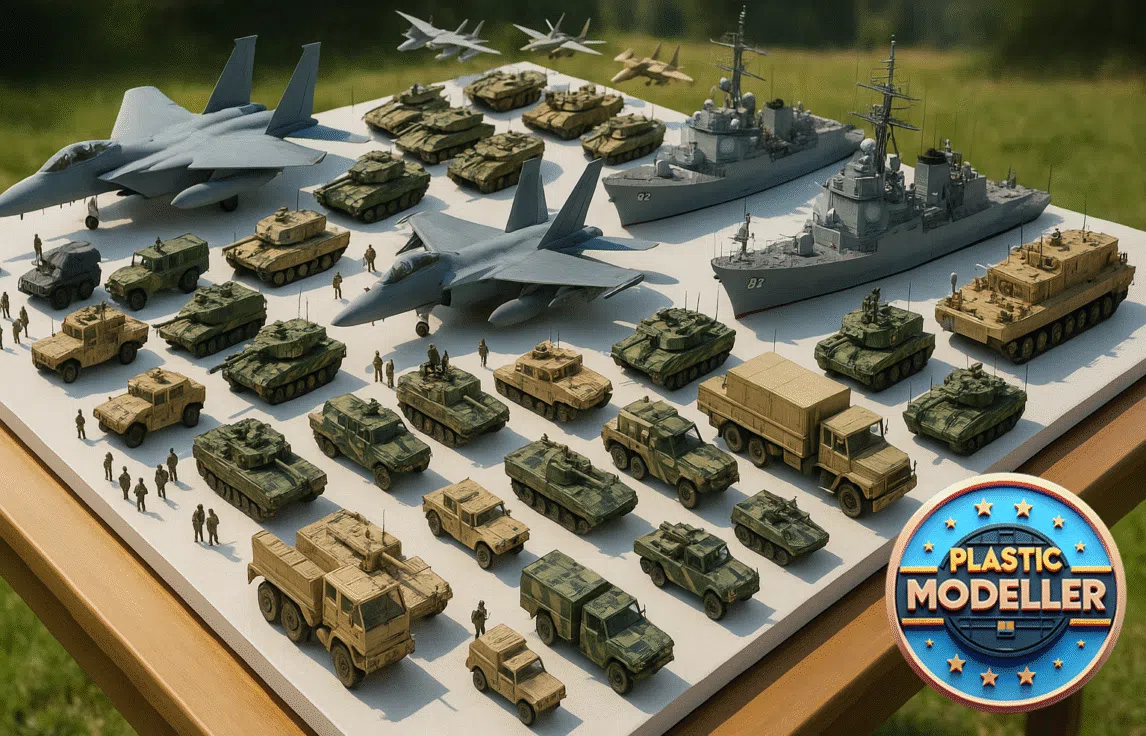

![Tamiya 1/12 Motorcycle | Model Building Kits | No.81 SUZUKI RGV-ƒ¡ XR89 14081 [ Japanese Import ]](https://scalemodelsonlinestore.com/wp-content/uploads/2023/09/61oiPyjEGS._AC_SL1500_-225x150.jpg)
